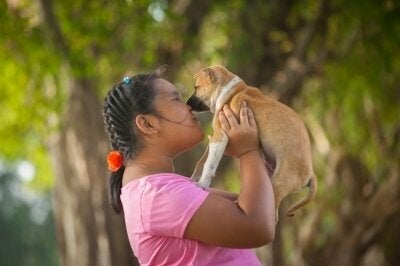
*Matt Cassels [2014] is doing a PhD in Psychiatry at the University of Cambridge with the support of a Gates Cambridge Scholarship. Picture credit: Witthaya Phonsawat and www.freedigitalphotos.net
The idea that a dog is man's best friend, and that children derive, not only enjoyment, but also valuable skills such as empathy and responsibility from owning a pet is so widely accepted in western societies that it has rarely been systematically investigated by researchers. Nevertheless, while some pet owners may well feel that their animal companions are a great comfort, or in some other way profoundly beneficial to them, others might view their pets as a nuisance, an unnecessary responsibility or expense, and even a source of stress.
While it may seem clear that pets are sometimes a profoundly positive influence on the lives of their owners, people vary enormously in terms of the quality of their relationships, human and animal alike, and the benefits derived from them. For that reason we need empirical research to determine how important pets really are to children, whether they are generally beneficial, and under what circumstances.
An evolving relationship
Humans and animals have a long history together. Cave paintings dating back over 30,000 years depict animals such as buffalo, horses, reindeer, wolves, and boars. For most of the Palaeolithic period, the relationships between humans and animals were ones of simple necessity; early humans competed for resources with animals, hunted them and were hunted by them. In the last 150,000 or so years, however, these relationships started to change with the domestication of animals for food, materials and labour. Early modern humans began relying increasingly upon, and spending more time alongside, animals, which were at the same time becoming evermore well suited to life with humans. Eventually, animals inevitably became providers of companionship and objects of affection to their human counterparts.
Today, pets are more common among North American and UK families with young children than are resident fathers. Nevertheless, their importance to children relative to other close relationships has received scant attention from researchers, as have the factors associated with the quality of child-pet relationships. This is in large part owing to a lack of valid tools for measuring human-animal relationships. I have endeavoured to redress these issues by examining the properties of a new pet attachment scale adapted from an established and psychometrically validated measure of human attachment.
Adversity
The results have supported not only the validity of this new tool, but also the validity of considering human-animal relationships in similar terms as human-human relationships in general. Having established its validity, this tool could then be used to see what factors were related to stronger relationships with pets, and also to compare children's pet and sibling relationships.
Child-pet relationships were stronger among children struggling with various measures of adversity, including environmental adversity, emotional distress and academic difficulties. Nevertheless, stronger child-pet relationships were also associated with positive behavioural adjustment. This finding is striking given adversity is strongly associated with behavioural problems, in this sample and in general.
In terms of demonstrating the importance of children's relationships with their pets, they were at least as strong as their relationships with their siblings, if not stronger. Moreover, children who suffered higher levels of adversity were more likely to prefer pets over siblings, indicating that not only do children turn to their pets for support when faced with adversity, but that they do so even more than they turn to their siblings.
Having demonstrated that children's relationships with their pets are functionally similar to their relationships with their siblings, can be measured by the same instrument and are equally if not more important to them, many possibilities open up for further research in this burgeoning field. While more work certainly needs to be done, I hope that this research provides valuable groundwork for empirical studies of child-pet relationships.
